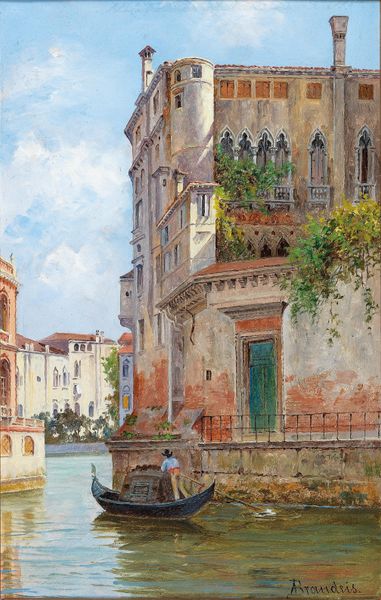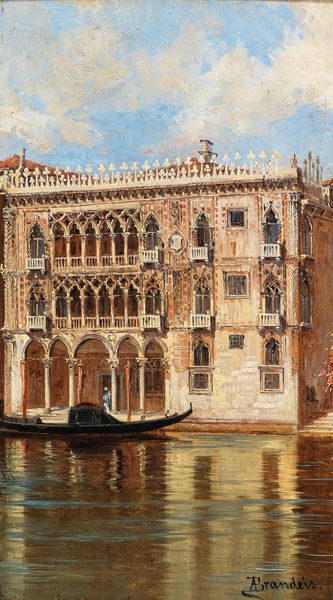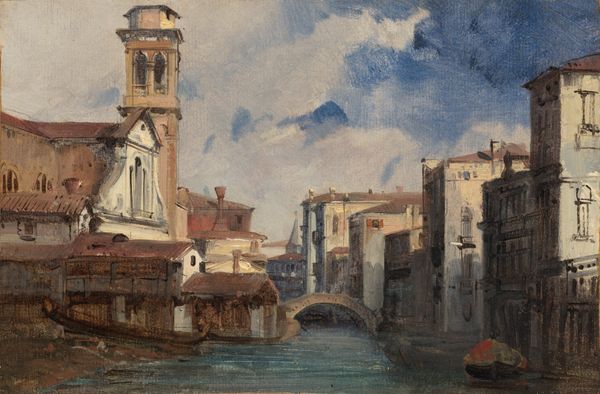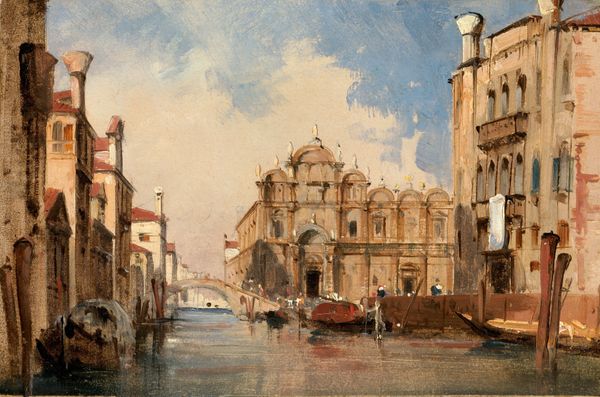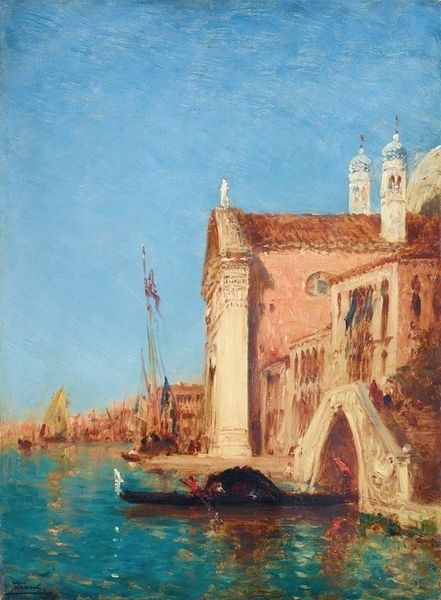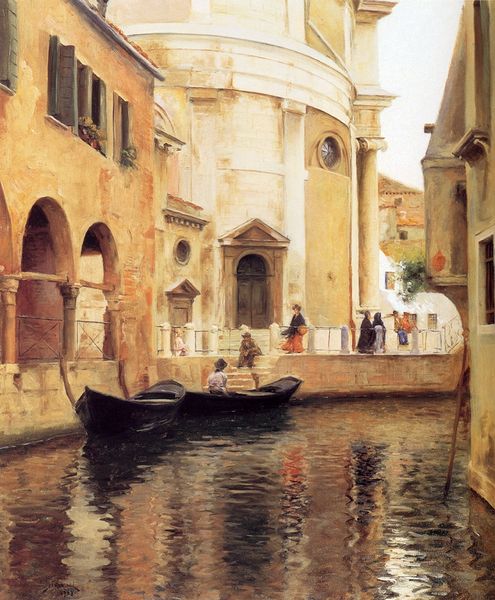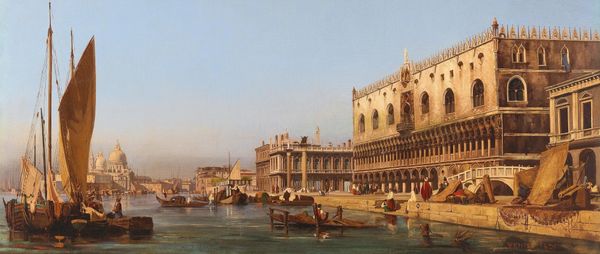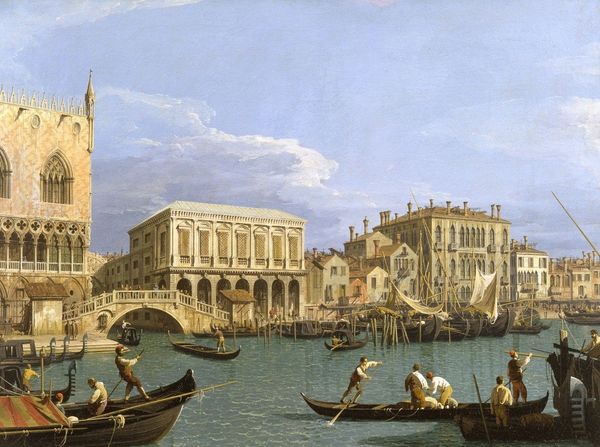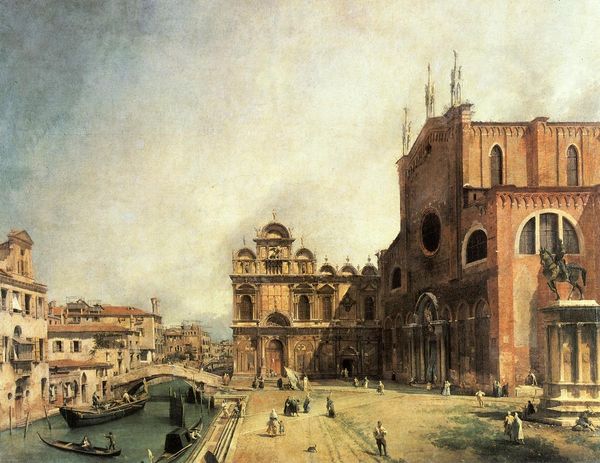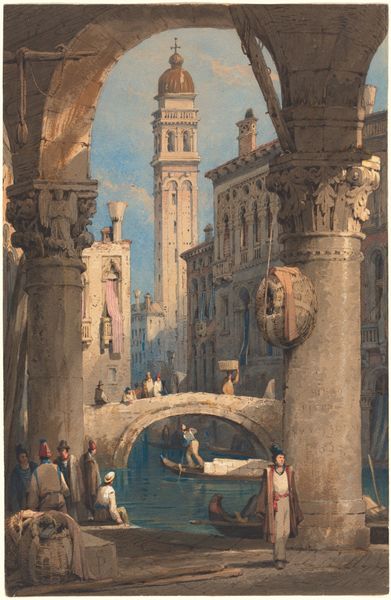
painting, oil-paint
#
venetian-painting
#
painting
#
oil-paint
#
landscape
#
oil painting
#
seascape
#
cityscape
#
realism
Dimensions: 23.5 x 15 cm
Copyright: Public domain
How can art influence our ideas about specific places? 🌇 This oil painting by the Czech artist Antoinetta Brandeis (1848-1926) depicts the Palazzo Contarini, a small palace on the waterways of Venice. How has the artist represented the city? 👇 The painting clearly communicates a sense of peace and tranquillity. Venice is idealised and shown as a romantic destination, bathed in the gentle light of the afternoon sun. Brandeis often worked outdoors (en plein air) in order to accurately capture these atmospheric effects. 🌞 Antoinetta Brandeis was among the first women to study at an official artistic academy in Italy. She gained recognition for her highly detailed cityscapes, known in Italian as ‘vedute’. These cityscapes often focussed on iconic locations within Venice, where Brandeis lived for most of her lifetime. This painting, completed between the 1870s and 1890s on a wooden panel, shows a view of the famous Grand Canal. Brandeis returned to this subject numerous times throughout her career. Here, she has painted the Renaissance architecture of Venice with fantastic precision and realism. 🏛️ The artist often exhibited her work under the masculine pseudonym ‘Antonio Brandeis’. This illustrates her attempts to navigate the male-dominated art scene of the nineteenth century. Editor: Lucy Jude Grantham

